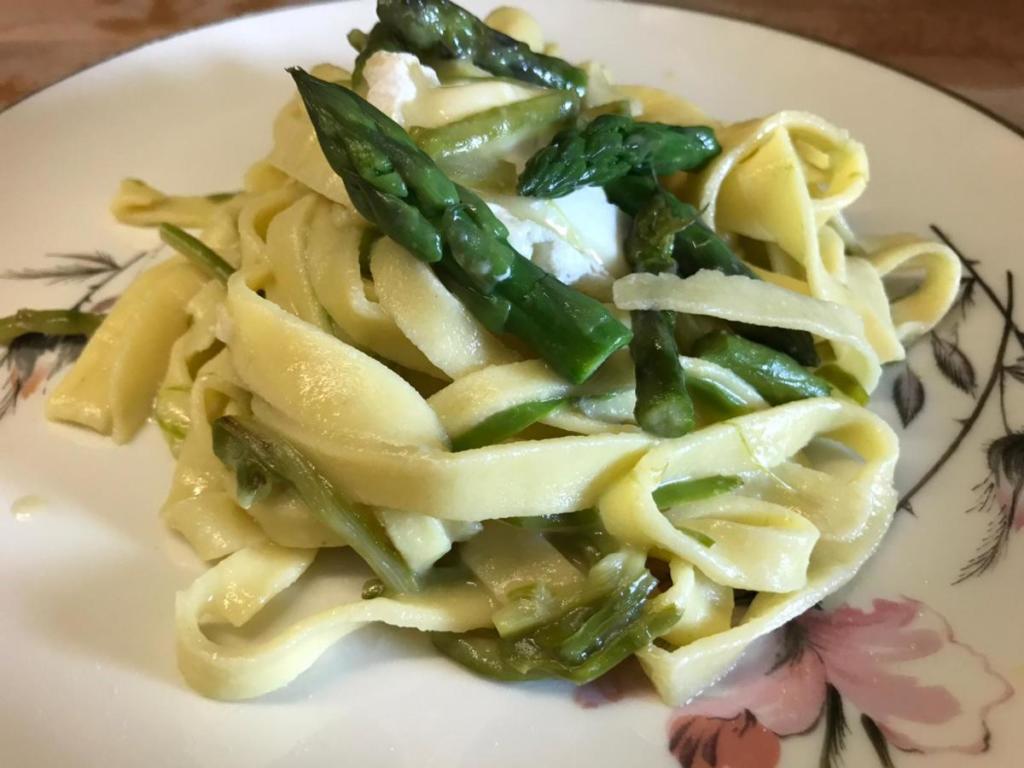I've been locked in my house for a month now.
Accustomed to being around 12 hours a day everywhere, this is crazy. Small jobs, Easter cleaning done. I'm fine until 2033.
The city is spooky in the morning.
Few people around. Those who move do so quickly and greet you with only a nod. Who brings their dog out. There is a row in front of the supermarket. Straight shot. Other dogs or are they the same? How much crap are these dogs ???
I jump in the car and go towards the Trionfale market. A moment of normalcy, an oasis of colour and aromas. Local producers are always at the market and Sandro brought freshly picked asparagus.
Yesterday from the pizzicarolo I found a seasoned robiola cheese with three types of milks (buffalo, goat and sheep). A small casket of 150 gr. A Piedmontese cheese that reveals the French domination of Haute Savoie.

I mix two eggs with a handful of semolina.
The rolling pin slides on the table with rhythmic and ancient gestures, always the same. Of course it is not perfectly round like that of grandma, but it is just as good.
Take the idea of a simple pasta. There are few ingredients.
For the pasta:
2 very fresh eggs,
200 gr of Cappelli wheat semolina bought on the last trip to Foggia,
Water (that of Rome is very good)
In the meantime, cut the asparagus and put the tips aside. The rest I do the Julienne method.
In the pan, the copper one of the great occasions, I put a nut of clarified butter. As soon as the butter is melted, I add the asparagus and let it cook over very low heat. Every now and then I add a little vegetable broth, they don't have to get dry.
The tips overcooked them in the pasta water and I immediately remove them.
I pour the pasta in a pan and stir adding a few slices of robiola and the asparagus tips.
On the table it shouldn't be cold right away.
A Sauvignon from the Colli Orientali del Friuli, a wine present in all phases.
Happy Easter to all








Follow us